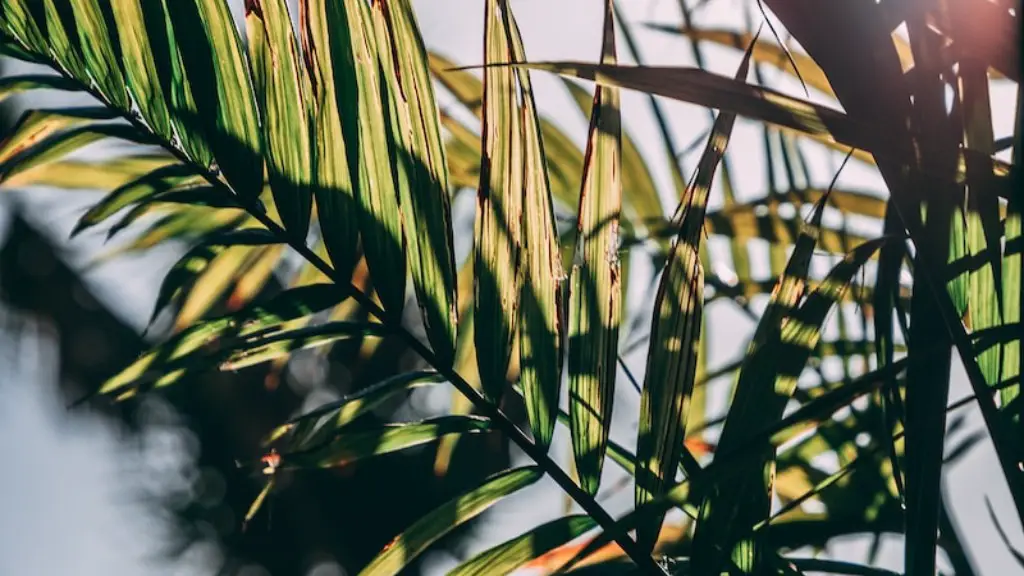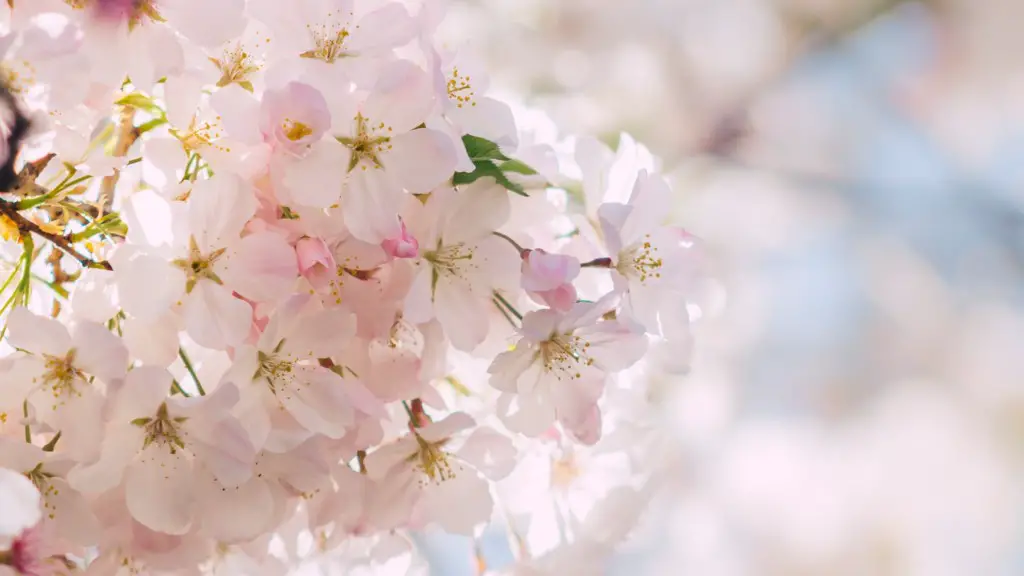Orchids are one of the most popular houseplants, and they can also make beautiful additions to your patio or yard. Growing orchids on palm trees is a great way to add a touch of tropical beauty to your landscape. Orchids require very little care and can thrive in a variety of environments. With a little bit of knowledge, you can easily grow healthy and beautiful orchids on palm trees.
Since orchids are epiphytes, they can be attached to a palm tree in a number of ways. You can use sphagnum moss, live tree fern, cork bark, or even nylon stocking material to create a support for your orchid. Once you have chosen a material, you will need to attach it to the tree. You can do this by using horticultural ties, fishing line, or even clear silicone caulk. Once your orchid is secured, you will need to water it regularly and give it bright, indirect light. With a little care, you can successfully grow an orchid on a palm tree.
Can I attach an orchid to a palm tree?
When choosing a palm tree to plant in your yard, it is important to select one that will not cast too much shade. Palm trees are a good choice for this purpose, as they are known to produce less shade than other types of trees. Additionally, look for a palm tree with rough bark, as this will make it easier to attach the orchid.
Orchids are a beautiful and popular type of plant, and they can make a great addition to any garden. One way to display them is by attaching them to trees. This can create a stunning and unique look in your yard.
To attach an orchid to a tree, first clean the roots of any soil or sphagnum moss. Then, spread the roots out on the bark of the tree trunk or branch. Use wire, string, or ties to attach the orchid securely to the tree. Water the plant well to help it establish itself.
Can you attach an orchid to a tree
If you have lots of trees, especially those with nice groovy bark, you can attach an orchid to them. Before you do, though, you need to know the kind of orchid you have and what it prefers: full shade, partial shade or full sun.
It is better to plant the orchid in a place where there is a fork in the trunk And a branch for support.
This will ensure that the orchid has the support it needs to grow and thrive.
What are the best orchids to mount on trees?
If you’re looking to add some orchids to your home as part of your decor, you may be wondering which ones are best for mounting. According to experts, the best orchids for mounting are those that grow on top of other plants like tree surfaces. Some of the best species for mounting are Brassavolas, Vandas, Angraecums, Cattleyas, Tolumnias, and Phalaenopsis. The key to success with these orchids is providing the same conditions as their natural habitats. This means ensuring they have plenty of bright, filtered light and good air circulation. With the right care, these orchids can make a beautiful and long-lasting addition to your home.
Orchids are a delicate and beautiful flower, but they require special care to thrive. Here are five things you should avoid doing if you want your orchid to stay healthy:
1. Overwatering them – The roots of an orchid are part of the lungs: the plant breathes through these so-called aerial roots. Too much water can suffocate the plant and lead to root rot.
2. Pouring water on the crown – This can damage the delicate flowers and leaves.
3. Planting them in regular soil – Orchids need a special type of soil that is well-aerated and drains quickly.
4. Place them in direct sunlight – Orchids do best in bright, indirect light.
5. Spray water on the flowers – This can cause the flowers to wilt and fade.
Is it better to grow orchids in water or soil?
It’s quite easy to grow orchids in water, as long as you give them the proper care. You don’t have to worry about soil maintenance and watering, which may make it even easier for some people. Just make sure to keep an eye on your orchids and give them the occasional trim, and they should do just fine!
Most orchids are epiphytes, which means they grow in the air, rather than in soil. They have fleshy roots that are covered with a layer of white cells called velamen, which absorbs water.
What triggers an orchid to bloom
Blooming in orchids is often triggered by a drop in night temperature, increase or decrease in day length, or sharp restriction in water availability. However, none of these will be successful unless your orchids have been grown with adequate light.
It is important to check the ties periodically when an orchid is attaching to a tree, as the tree trunk may widen and the ties may need to be loosened.
How do you tie potted orchids to a tree?
Orchids are epiphytic plants, meaning they grow on other plants or objects, typically trees, without parasitizing them. To establish an orchid in a tree, simply tie it on with something soft and stretchy like pantyhose (cable ties or fishing line will cut into the tree as it grows). Pack some damp sphagnum moss around the roots to protect them until they get a hold around the tree.
Orchids are one of the most popular houseplants, and for good reason – they’re beautiful, low-maintenance, and long-lived. But even though they’re easy to care for, they do need to be repotted every one to two years to keep them healthy.
When you repot an orchid, be sure to use a potting mix specifically formulated for orchids – regular potting soil will not provide the right drainage or aeration that orchids need. And most importantly, make sure the pot you use has drainage holes – otherwise, the roots will rot and the plant will die.
How can I stimulate my orchid to grow
One way to encourage your orchid to spike is to give it a little cool air! Place your orchid in a cooler part of your home for about a week, avoiding cold blasts of air from fans or air conditioners. An optimal nighttime temperature is between 60 and 70 degrees Fahrenheit.
Most orchids prefer shallower squat pots for a few reasons. Their roots don’t like all the moisture retained in deep pots, and they just don’t need the depth anyway as their roots spread out, not down. This allows them to better absorb nutrients and stay healthy.
Do orchids like morning or afternoon sun?
Orchids are unique flowers that require different care than most house plants. They do best with indirect morning or evening sun, but should not be placed in direct hot sun during the middle of the day. With the right care, these beautiful flowers can thrive indoors.
Orchids are beautiful flowers that come in a wide variety of colors, shapes, and sizes. They are a popular choice for both indoor and outdoor gardens. While most orchids do best in humid environments, there are some that can tolerate dry conditions.
When it comes to potting orchids, there is some debate as to whether or not they should be placed in soil or bark. Most experts agree that orchids should not be grown in soil because it is too dense and can cause the roots to rot. Instead, orchids should be potted in a bark mixture or other materials that allow for good aeration, adequate drainage, and some moisture retention.
Conclusion
There are a few things to consider when growing an orchid on a palm tree. First, make sure that the palm tree is healthy and has enough light. Second, choose an orchid that is suited for growing in a palm tree habitat. Third, provide the orchid with proper care, including regular watering and fertilizing.
The best way to grow an orchid on a palm tree is to choose a young palm that is still growing. You will need to attach the orchid to the tree with something like fishing line or nylon so that it can get the proper sunlight and air circulation. Be sure to water your orchid regularly and give it the proper nutrients so that it will bloom and thrive. With a little bit of care, you can enjoy the beauty of an orchid growing on your palm tree.




